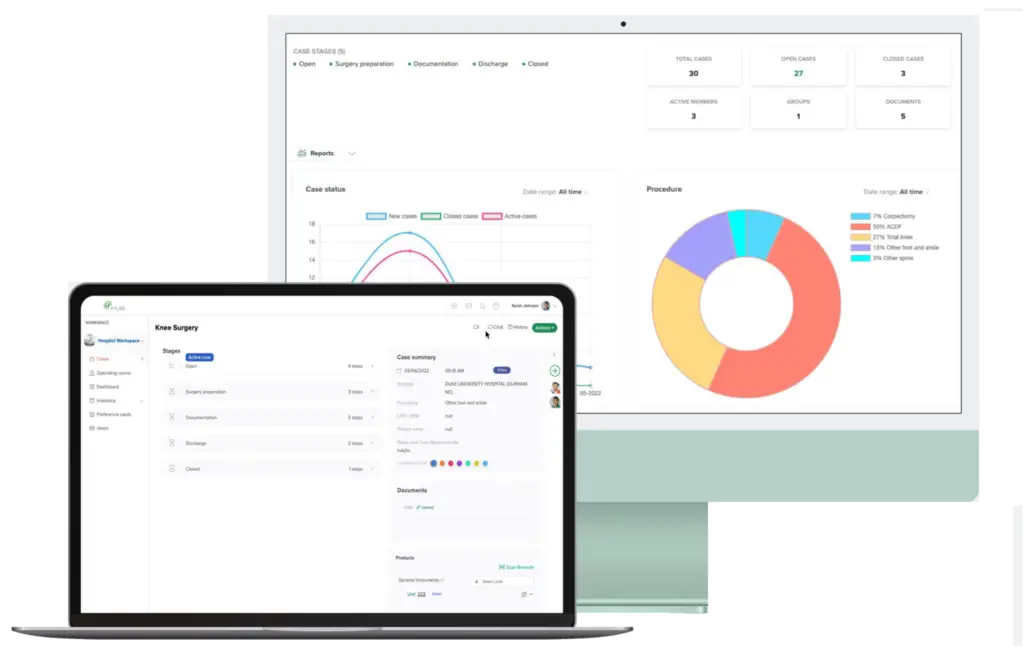Surgical case management software is revolutionizing how healthcare providers manage surgical procedures. With the right software, hospitals, and surgical centers can streamline workflows, enhance communication, and improve patient outcomes. However, navigating the myriad options available can be daunting. This guide will help you understand the key features to look for and how to effectively implement surgical case management software in your healthcare facility.
Understanding Surgical Case Management Software
What is Surgical Case Management Software?
Surgical case management software is designed to automate and optimize the planning, coordination, and execution of surgical procedures. It includes features such as scheduling, documentation, communication, inventory management, and data analytics.
Benefits of Surgical Case Management Software
- Improved Efficiency: Automates administrative tasks, reducing the time spent on scheduling and paperwork.
- Enhanced Communication: Facilitates seamless communication between surgical teams, reducing errors and improving coordination.
- Better Patient Outcomes: Ensures accurate and timely information flow, leading to improved patient care and satisfaction.
- Cost Savings: Reduces cancellations and rescheduling, leading to significant cost savings.
Key Features to Look For
1. Scheduling and Coordination
Efficient scheduling is crucial for surgical case management. Look for software that offers robust scheduling tools, allowing you to manage surgical cases effectively. Features should include:
- Calendar integration
- Automated reminders
- Conflict resolution
- Case prioritization
2. Patient Management
Patient management features ensure that all patient information is accurately documented and easily accessible. Key functionalities should include:
- Electronic Health Records (EHR) integration
- Pre-operative and post-operative care documentation
- Patient tracking and status updates
- Secure patient communication portals
3. Communication Tools
Effective communication is essential for successful surgical outcomes. Ensure the software provides:
- Real-time messaging
- Team collaboration tools
- Notifications and alerts
- Integration with email and other communication platforms
4. Inventory and Supply Chain Management
Managing surgical instruments and supplies is critical. The software should include:
- Inventory tracking
- Automated supply orders
- Equipment usage reports
- Expiry date tracking
5. Data Analytics and Reporting
Data-driven decision-making can significantly improve surgical outcomes. Look for software with:
- Comprehensive reporting tools
- Data visualization
- Performance metrics
- Customizable dashboards
Implementing Surgical Case Management Software
1. Assess Your Needs
Begin by assessing the specific needs of your surgical team. Consider the size of your facility, the number of surgical procedures performed, and any unique requirements.
2. Research and Compare Options
Research various software solutions, focusing on the features and benefits they offer. Compare user reviews, pricing, and customer support.
3. Involve Key Stakeholders
Engage key stakeholders, including surgeons, nurses, and administrative staff, in the decision-making process. Their input is crucial for selecting a software solution that meets everyone’s needs.
4. Plan for Implementation
Develop a detailed implementation plan that includes training for staff, data migration, and system integration. Ensure you have a clear timeline and assign responsibilities.
5. Train Your Team
Comprehensive training is essential for successful implementation. Provide training sessions for all users, and consider ongoing education to keep staff updated on new features and best practices.
6. Monitor and Evaluate
After implementation, continuously monitor the software’s performance and gather feedback from users. Use this information to make necessary adjustments and improvements.
Conclusion
Navigating the world of surgical case management software can be complex, but choosing the right solution can transform your surgical operations. By focusing on essential features such as scheduling, patient management, communication, inventory management, and data analytics, you can find software that meets your needs and enhances your surgical practice. Effective implementation and ongoing evaluation are key to reaping the full benefits of your chosen software.
How HUB Healthcare Can Help
HUB Healthcare offers a comprehensive solution designed to enhance communication in healthcare, streamline care coordination, and improve overall workflow efficiency. Our platform includes features such as medical case management software, healthcare document management, and healthcare analytics to ensure that all aspects of patient care are optimized. By leveraging HUB Healthcare’s robust tools, organizations can reduce workflow bottlenecks, automate repetitive tasks, and facilitate better collaboration among healthcare providers. This not only improves work quality but also enhances patient outcomes, making HUB Healthcare an essential partner in achieving healthcare excellence. Care Coordination








